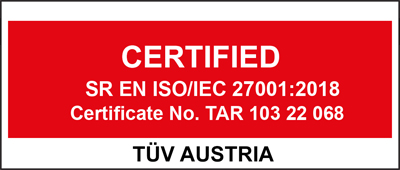Blog

Saas vs On Premises Applications
SaaS vs. On-Premises Applications: Advantages, Disadvantages, and Trends in 2020
- SaaS applications are hosted by the provider in the cloud, and you can use them on a subscription basis. Examples: Microsoft Office 365, Dropbox, Slack.
- On-premises applications can be installed locally on your devices after you pay for a permanent right to use license. Examples: Office 2019, Adobe Creative Suite, SharePoint.
- SaaS solutions are preferable for companies as they imply lower costs than on-premises apps.
- On the other hand, on-premises apps offer better data protection.
- By 2021, SaaS apps will surpass on-premises apps in terms of market share.
2020 won’t bring major changes in terms of software solutions, but will rather continue the trends of previous years. Thus, clients’ tendency to opt for SaaS (Software as a Service) solutions rather than on-premises ones will persist.
As far as SaaS application trends are concerned, an interest in implementing artificial intelligence is noticeable, as well as a rise in popularity for vertical SaaS apps.
What is the difference between SaaS and on-premises apps, and why do companies tend to lean towards the former? For a clear picture, we’ll present both types below, as well as the pros and cons of each.
Software as a Service (SaaS)
This concept refers to the software applications that are hosted by the provider and which the client accesses on a subscription basis. They are preferred by clients because they imply smaller costs than on-premises solutions. Examples of SaaS apps include Microsoft Office 365, Dropbox, Slack, etc.
On Premises
The term refers to software that is installed and runs locally, on the client’s PC or server. This means that in order to use the app, you only need to pay once, when you receive the (permanent) license. Examples of on-premises apps include Microsoft Office 2019, Adobe Creative Suite, SharePoint, etc.
Pros and cons of the two solutions
Although companies have a clear tendency to opt for SaaS solutions, the on-premises option is not to be completely shunned. In fact, it has some advantages that are worth mentioning (and that you’ll find below).
Advantages of SaaS
The main advantage of SaaS solutions is the low cost for access to a certain service. Thus, you can pay for services monthly (or on a different plan you devise with the provider), for only as long as you use them. More precisely, you pay for as much as you use.
Moreover, bearing in mind that SaaS apps are hosted and managed by the provider, future maintenance and development costs are exclusively on them.
Last but not least, considering that SaaS apps are stored in the cloud, you can access them anytime and anywhere, from any device (provided there’s a good internet connection), without any added costs to the original subscription.
Disadvantages of SaaS
Taking into account that most SaaS apps are available in a standard form, fitting multiple niches, it’s difficult for them to meet all the needs of a company. Consequently, you’ll have to adapt to the solutions offered by the provider.
Moreover, the difficulty of integrating the SaaS solution with other apps or software you use can become a major inconvenience if the SaaS is not “open standard.” In such cases, companies need to develop their own integration systems, which involves extra time and costs, as well as other shortcomings related to business continuity.
Last but not least, transferring a large amount of data to SaaS providers’ data centers can be worrisome for companies that handle sensitive data – and not only for them. Even so, it’s worth mentioning that most SaaS providers address this problem as their main issue and invest large amounts in extra security measures.
On Premises Advantages
One of the greatest advantages of on-premises solutions is the high level of control you have over the data that’s processed with these apps. Because the data is stored on their own servers, companies that use on-premises solutions have better security. This is why companies that work with sensitive data (banks, medical services providers, etc.) prefer on-premises solutions rather than SaaS.
Moreover, another advantage is that you aren’t dependent on a speedy internet connection in order to use the app within optimal parameters.
On-Premises Disadvantages
Buying on-premises software (such as Microsoft Office 2019, designed for small companies) involves costs which can be hard to bear for small companies, since you have to pay for a license for each user. So, if there are 15 employees working for your company who need to use this software, it can be quite difficult to cover the cost of these licenses, which can be as high as 20 000 RON (over 4500 USD).
On the other hand, you need to also consider the fact that although the provider will probably update the software a few times, at some point a newer version will come out that you’ll have to pay for again, if you want or need to use it.
SaaS or On Premises?
Taking into account everything described above, it’s hard to tell which one of the two solutions – SaaS or On Premises – is the best for any particular company, as the decision is not a clear-cut one. Each has its own pros and cons, as you can see, and there is no general rule for picking the ideal option.
Even so, in the past few years, SaaS solutions have become more and more popular, due to the previously mentioned advantages (low costs, ease of use, no maintenance done by the company, etc.) and the trend will continue in 2020. What’s more, according to estimates by specialists, by 2021 SaaS apps will surpass on-premises apps in market share.
The most important SaaS trends in 2020
1. Artificial intelligence investments
Artificial intelligence (AI) is not in the starting phase anymore. This new technology is starting to be massively implemented in the business world, revealing new opportunities for companies, among them the SaaS providers. In these ways, they are continually improving the functionalities of their apps, from response time, new security measures and automations to new types of customization.
2. New connections and integrations
The limitations regarding SaaS apps’ integration with other software is one of their biggest disadvantages, but this is about to change. More and more SaaS providers are starting to focus on this aspect, although there hasn’t been much progress yet. This is why 2020 may be a year of pivotal change in this regard.
3. Popularity increase of vertical SaaS apps
There are two kinds of SaaS apps: horizontal and vertical. The horizontal ones are generic, created to match the needs of companies from different fields, while the vertical are created for a certain niche (e.g. medical).
Therefore, although horizontal SaaS apps have a high addressability, they have the disadvantage of not being customized, which leads to difficulties regarding the users’ sales and marketing strategies. On the other hand, vertical SaaS apps have the advantage of already being customized with the necessary tools for a certain kind of business, which makes them more and more popular with companies.
Besides the above-mentioned trends, many changes are expected this year in the SaaS industry, changes that range from pricing policy to implementing new concepts and technologies.

